Allergic Rhinitis (AR): Managing Symptoms That Affect 1 in 5 Singaporeans
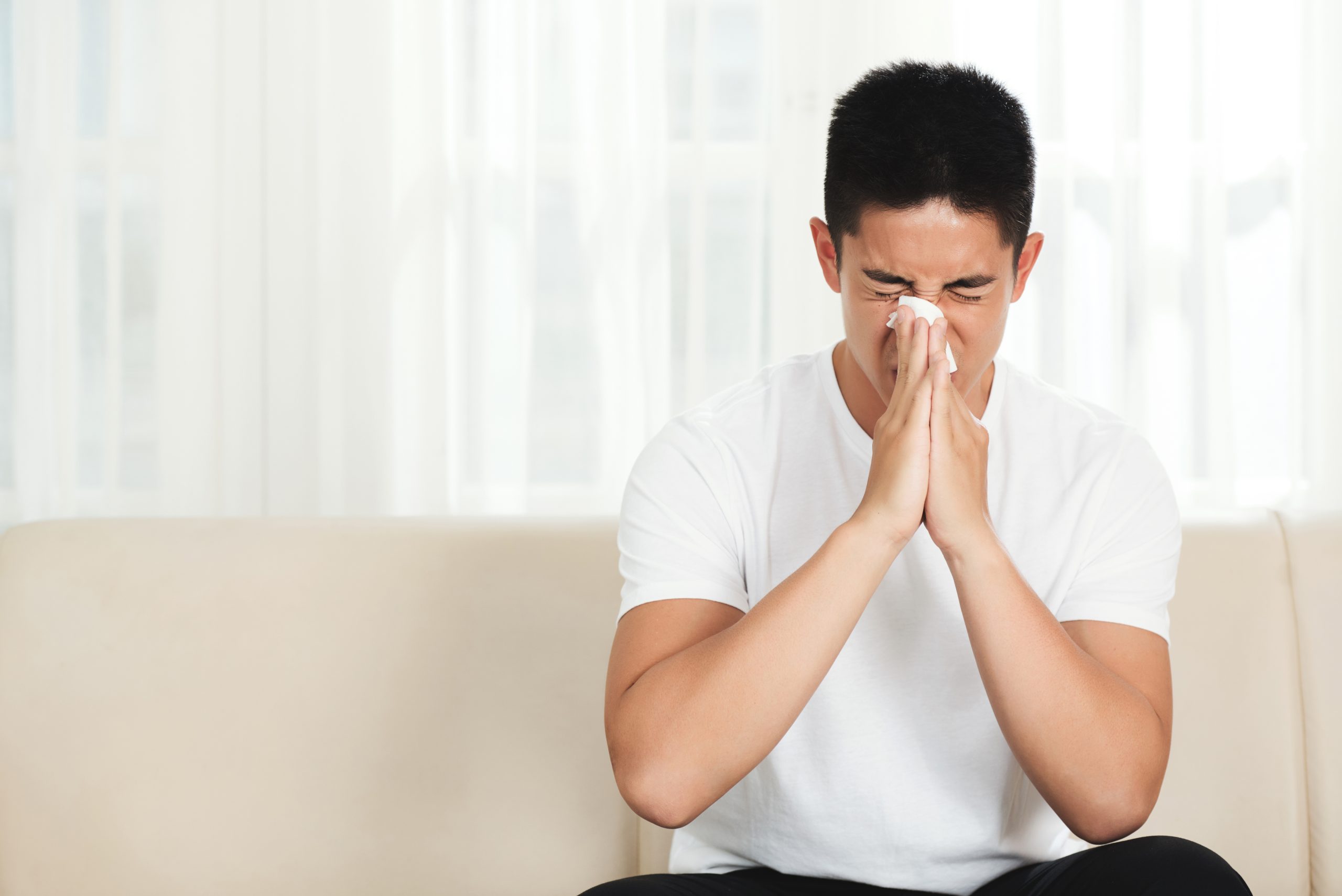
What is Allergic Rhinitis (AR)?
Allergic Rhinitis Causes
When exposed to an allergen, your body releases histamine, a chemical that plays a pivotal role in allergic reactions. Histamine triggers symptoms such as sneezing and itching, characteristic of allergic rhinitis.
Inhalant Allergens:
- Domestic: House dust mites, mould.
- Animal: Pollen, insects, dander.
- Others: Cockroach debris, feathers, indoor pollutants.
- Environmental: Pollen from grass, trees, and flowers. Pollen levels vary with weather conditions and time of year.
- Occupational: Exposure to workplace allergens like dust, fumes, and chemicals.
Indoor and Outdoor Triggers:
- Mould spores thrive in damp areas indoors and outdoors.
- Pet dander from animals’ skin, saliva, and urine can be potent allergens.
- Dust mites live in textiles like bedding and carpets.
- Irritants like smoke, perfume, and exhaust can worsen symptoms.
Types of Allergic Rhinitis
Seasonal
Perennial
Chronic Allergic Rhinitis (CAR)
Non-Allergic Rhinitis
Infectious Rhinitis
Allergic Rhinitis Symptoms
- Nasal Symptoms: Frequent sneezing, a clear, watery discharge, stuffiness, and an itchy nose are typical. Nasal congestion can lead to a drip from your nose to your throat, which might cause a sore throat or cough.
- Eye Symptoms: Red, watery eyes often accompany nasal symptoms, especially during high pollen seasons.
- Itching and Irritation: You might experience itching in your ears, the roof of your mouth, throat, and around your eyes, which may appear red and watery. Itching can also affect the skin, potentially leading to dry, eczema-like symptoms.
- Sore Throat: Often a result of postnasal drip, where mucus trickles down the back of the throat, causing irritation and a persistent sore throat
- Headache: Allergic rhinitis can trigger sinus headaches, characterised by a deep and constant pain in the cheekbones, forehead, or bridge of the nose. These headaches often worsen with movements that shake the head.
- Allergic Shiners: Commonly referred to as “dark circles” under the eyes, these are caused by congestion of the small blood vessels located beneath the skin of the lower eyelids, a direct result of chronic nasal congestion. Allergic shiners are particularly prevalent among individuals with severe or poorly managed allergies and can be an indicator of the need for a review and adjustment of treatment strategies.
- Other Symptoms: Allergic rhinitis can cause tiredness, irritability, sadness, and sleep disturbances, which may affect concentration and increase stress. You might also cough occasionally and experience wheezing or breathing difficulties.
- Additional Signs: Hives (red, itchy, raised welts on the skin, often caused by allergies) and significant fatigue can develop after long-term allergen exposure.
- Seasonal Variations: Symptoms can vary throughout the year, with hay fever peaking during specific pollen seasons and indoor allergies like those from pets and dust mites worsening in winter due to increased indoor activity.
How is Allergic Rhinitis Diagnosed?
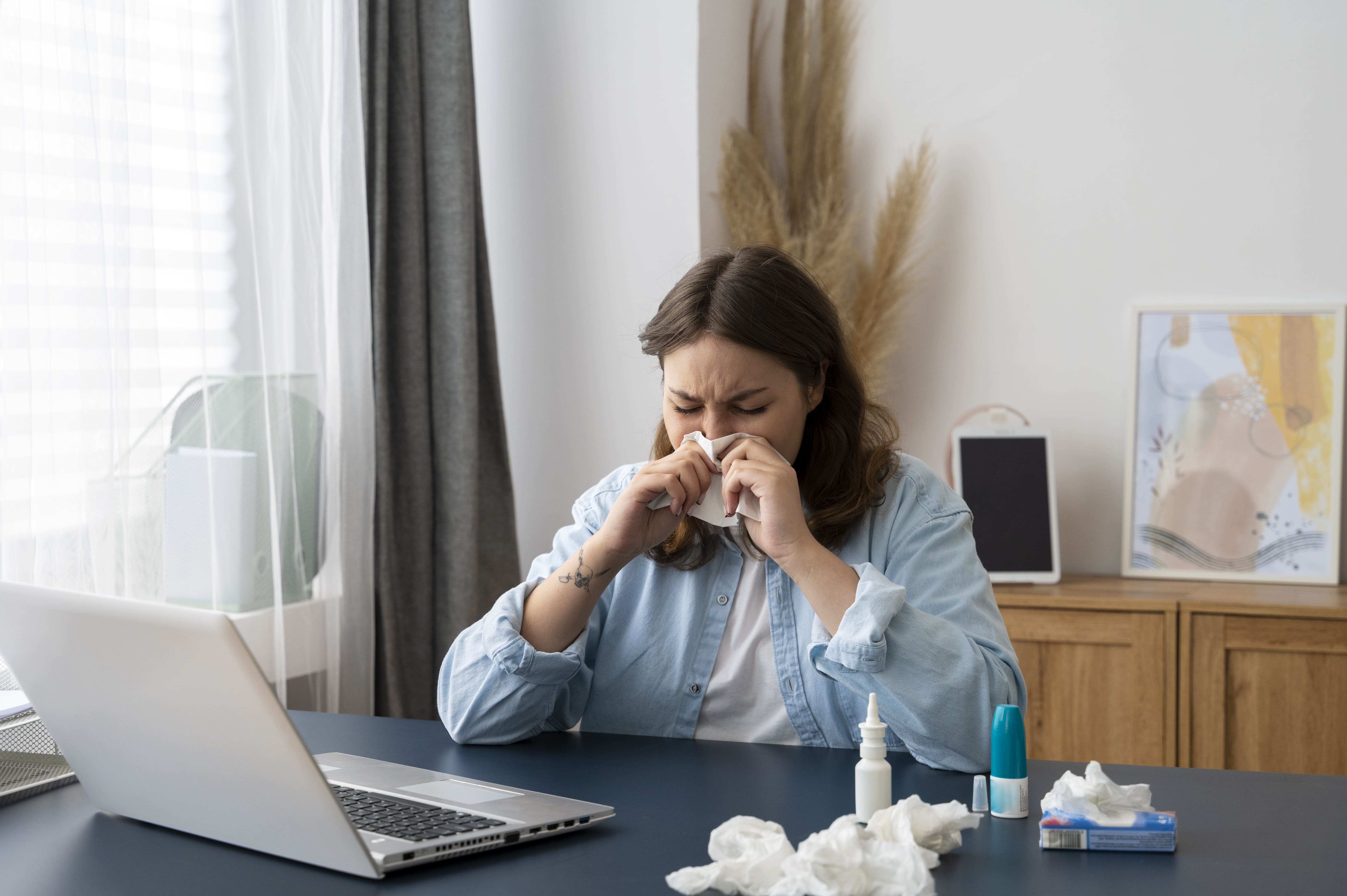
Common Tests:
- Skin Prick Test (SPT): The Skin Prick Test is an important test to find out what you’re allergic to. During the test, a tiny bit of each allergen, like pollen or pet dander, is placed on your skin, usually on your forearm. Then, the skin is lightly pricked so the allergen goes just under the surface. If you’re allergic to it, a small, red bump that looks like a mosquito bite will show up within 20 minutes. This quick and effective test helps doctors figure out exactly what causes your allergies, so they can give you the right treatment.
- Blood Tests (IgE Test, RAST): A blood test that measures specific antibodies to identify what you’re allergic to. RAST (Radioallergosorbent Test) measures immunoglobulin E antibodies to specific allergens in your blood.
- Radiometric Assay Test (RA): Measures your allergic reaction to specific items via blood analysis.
- Intradermal Provocative Food Test (IPFT): Small amounts of food allergens are injected under your skin to see if they cause a reaction.
- Serological Tests: These can be costly but reveal how your body reacts to various allergens. A complete blood count (CBC), especially the eosinophil count (measures the number of eosinophils, a type of white blood cell, in the blood), can also assist in diagnosing allergies.
Allergic Rhinitis (AR) Stages
Stage 1 (Intermittent)
Stage 2 (Persistent)
Stage 3 (Mild)
Stage 4 (Moderate to Severe)
Allergic Rhinitis Treatment Options
Nasal Treatments
- Nasal Corticosteroids: These anti-inflammatory sprays, such as Flonase (fluticasone), Nasacort (triamcinolone), and Rhinocort (budesonide), reduce inflammation within the nasal passages, helping to alleviate congestion and improve breathing.
- Antihistamine Sprays: Designed for quick relief from sneezing, runny nose, itching, and redness. Examples include Astelin and Patanase.
- Combination Sprays: Combining antihistamines with decongestants ( medications that help reduce nasal congestion by narrowing blood vessels), these sprays target multiple symptoms simultaneously. Examples include Dymista (azelastine and fluticasone) and Ryaltris (mometasone and olopatadine).
Eye Drops
Nasal Corticosteroids (Anti-Inflammatory Medicine)
Antihistamine Drops and Sprays
Combination Sprays
Leukotriene Inhibitors
Decongestants
Immunotherapy (Allergy Shots and SLIT)
- Sublingual Immunotherapy (SLIT): Allergy treatment using tablets placed under the tongue to decrease sensitivity to allergens. Currently, this method is available for treating specific allergies, including grass, ragweed, and house dust mites.
- Subcutaneous Immunotherapy (SCIT): Allergy shots that gradually decrease your sensitivity to allergens, reducing symptoms over time. An allergen immunotherapy program typically continues for three to five years, involving regular injections of a diluted allergen extract.
Surgery
AR Treatment Procedure
Before the Procedure
- Consult an allergist to confirm allergic rhinitis through tests.
- Discuss your symptoms and allergy history.
- Avoid known allergens as advised by your doctor.
- Prepare questions or concerns about managing symptoms.
During the Procedure
- Undergo skin or blood tests to identify specific allergens.
- Stay relaxed; these tests are generally painless and quick.
- Communicate any discomfort to the healthcare provider immediately.
After the Procedure
- Review test results with your doctor to understand allergen triggers.
- Receive a personalised management plan, including possible medication and lifestyle adjustments.
- Schedule follow-up appointments to monitor your condition and adapt the treatment plan as necessary.
AR Treatment Benefits
- Enhanced Daily Functioning: Effective management reduces symptoms like nasal congestion and eye irritation, improving concentration and performance at work or school.
- Better Sleep Quality: Treatment helps alleviate disruptive symptoms like nasal congestion, leading to more restful sleep and increased energy levels.
- Decreased Risk of Complications: Regular treatment reduces the risk of associated conditions such as sinus infections, ear infections, and exacerbations of asthma, promoting long-term health.
- Improved Social Interactions and Mood: With symptoms under control, you’re likely to experience better moods and increased social engagement, enhancing your overall well-being.
- Long-term Health Benefits: Consistent treatment can lessen the severity of allergic reactions over time, potentially decreasing overall sensitivity.
Allergic Rhinitis in Children
Impact on Children:
- Sleep and Behavioural Impact: Disrupted sleep from severe nasal congestion often leads to daytime fatigue, irritability, and behavioural changes, impacting school performance and social interactions.
- Health Complications: Frequent middle ear and sinus infections, along with exacerbated asthma symptoms, are common health challenges for children with allergic rhinitis, especially those with co-existing asthma.
Management Strategies:
- Diagnosis: Skin prick tests identify specific allergens affecting the child, guiding targeted treatment.
- Comprehensive Treatment and Environmental Control: Treatments such as nasal sprays, steroids, and allergen avoidance strategies like using HEPA (High Efficiency Particulate Air) filters in the home and regular pet bathing are critical. These measures, coupled with medication, help manage symptoms effectively and reduce allergen exposure.
- Lifestyle Adjustments: Encouraging hand washing, especially after playing outside or handling pets, and showering before bed can minimise allergen exposure, alleviating nighttime symptoms.
Allergic Rhinitis in Babies
Comparison of Allergic Rhinitis with Cold, Flu and Sinusitis
| Allergic Rhinitis | Sneezing, runny or stuffy nose, itchy eyes | Persistent/seasonal | Antihistamines, nasal sprays |
| Cold | Sneezing, coughing, sore throat, mild body aches | 7-10 days | Rest, hydration, OTC meds |
| Flu | Fever, muscle aches, cough, chills, fatigue | 1-2 weeks | Antiviral drugs, rest |
| Sinusitis | Nasal congestion, facial pain, sinus pressure | Days to weeks | Decongestants, sometimes antibiotics |
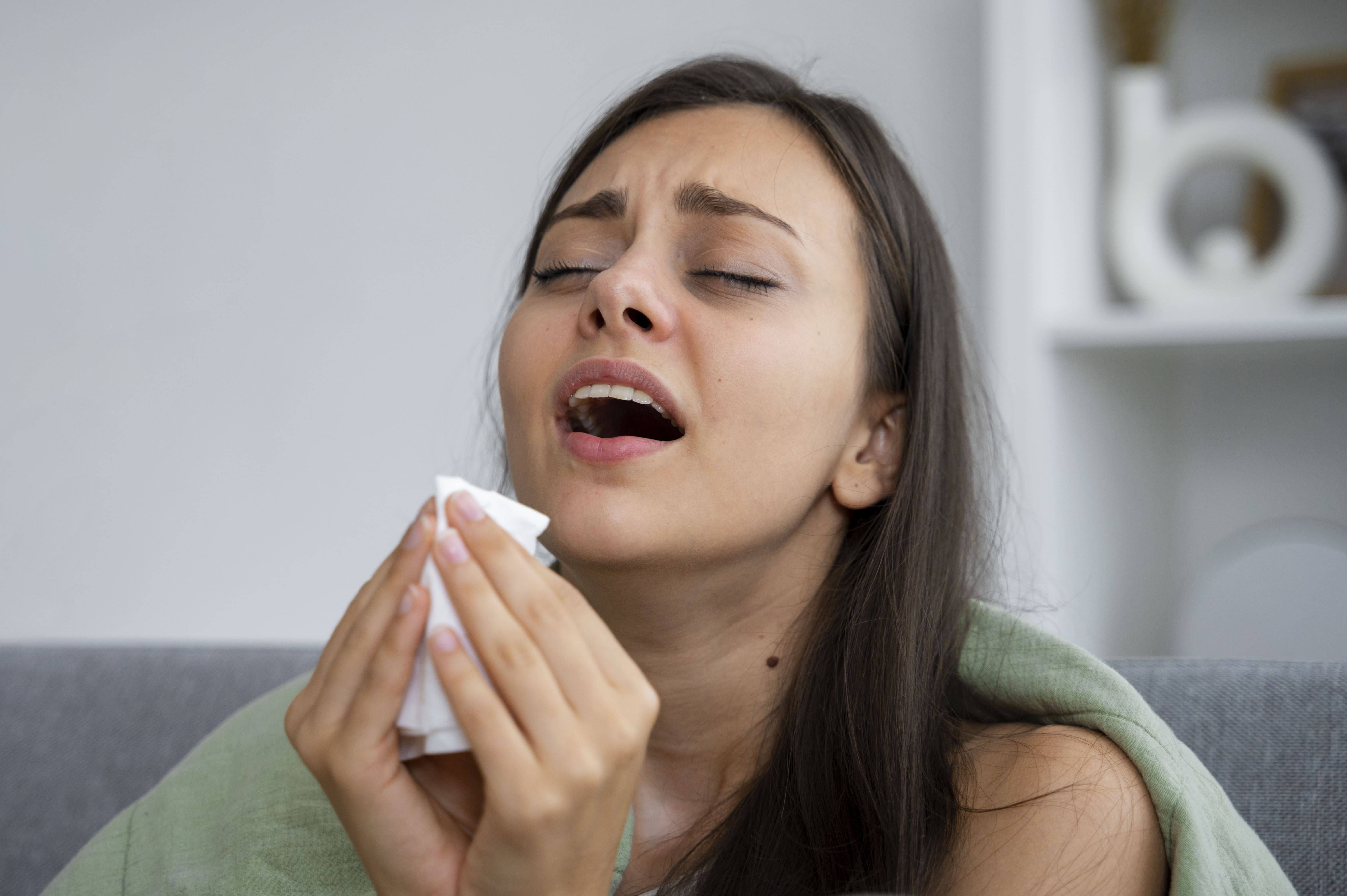
Allergic Rhinitis and Asthma
How to Prevent AR
- Identify and Avoid Allergens: Focus on common triggers like mites, pollen, and animal dander. Use dust- and mite-proof bedding and mattress covers. Keep pets out of your bedroom to reduce allergen exposure.
- Environmental Control: Use air conditioning and keep windows closed during high pollen-count days to minimise pollen entry. Employ air purifiers with HEPA filters in your home to capture tiny allergenic particles. Wash your bed linens in hot water to eliminate allergens.
- Personal Care: Do not touch or rub your eyes and nose as this can aggravate symptoms. Wash your hands frequently with soap and water, especially after contact with pets or coming indoors. Shower before bed to wash off allergens from your hair and skin.
- Pet Management: Bathe pets regularly to reduce dander. Avoid letting pets sleep on your bed and keep them off couches and other furniture where allergens can accumulate.
- Home Maintenance: Use a vacuum with a certified asthma & allergy-friendly filter. Clean floors with a damp mop rather than sweeping. Keep your home dry and well-ventilated, and use a dehumidifier in damp areas to prevent mould growth.
- Lifestyle Adjustments: Stay indoors during peak pollen times, usually midmorning and early evening. Wear sunglasses and a wide-brimmed hat outdoors to reduce pollen exposure to your eyes. Avoid line-drying clothes outdoors where pollen can settle.
- Medicinal Measures: Use saline nasal rinses and nasal corticosteroid sprays as directed to relieve nasal symptoms. Consider allergy shots (immunotherapy) for long-term relief, which are available in sublingual and subcutaneous forms.
- Diet and Exercise: Implement dietary changes to manage symptoms and avoid food allergies like milk, egg white, and soy. Exercise indoors when pollen counts are high.
- Avoid Irritants: Limit exposure to irritants such as cigarette smoke, perfumes, and cleaning products that can exacerbate symptoms.
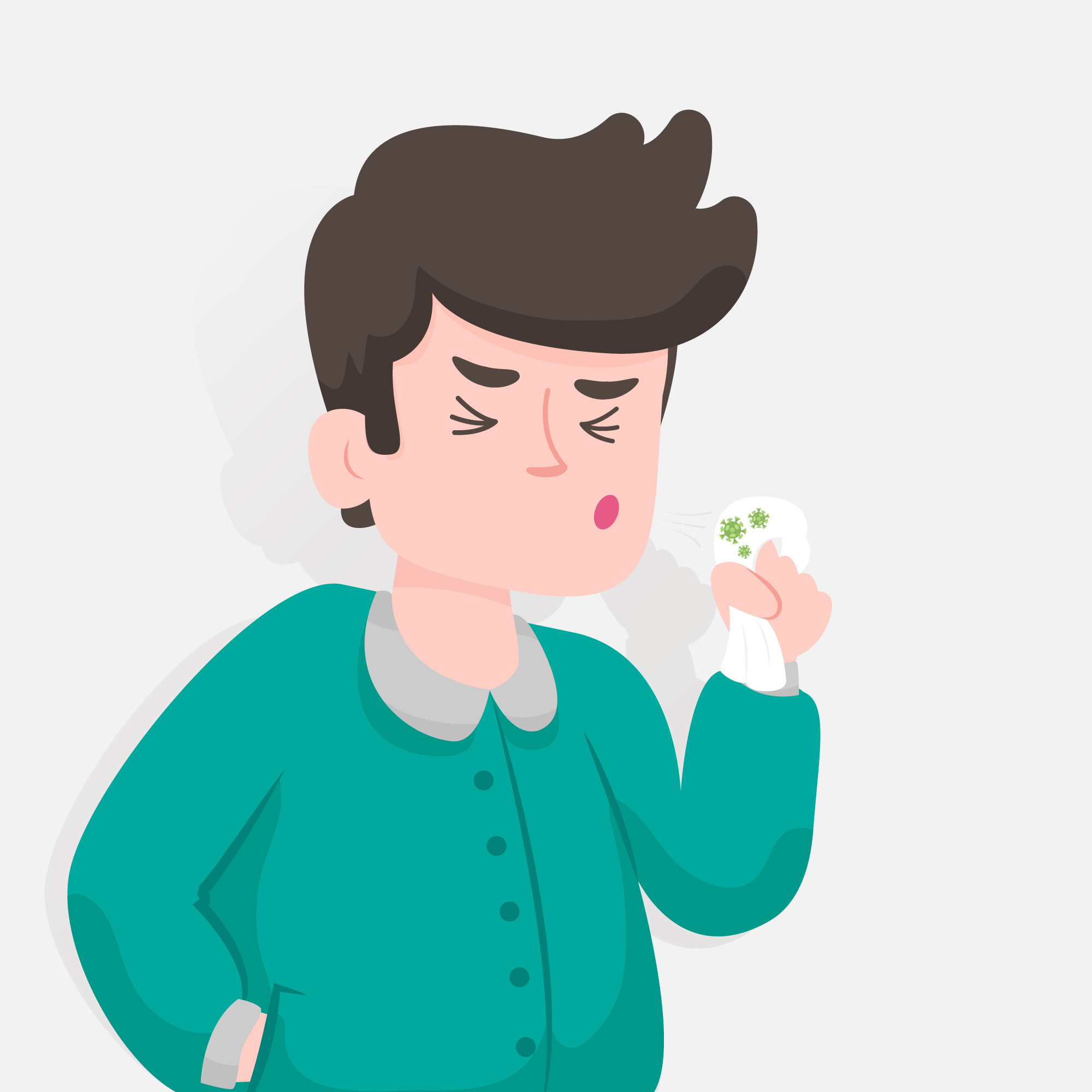
Allergic Rhinitis Risks
- General Discomfort: These symptoms can cause significant discomfort, impacting daily activities and sleep.
- Effects on Daily Life: Allergic rhinitis can disturb sleep, daily activities, and performance at work or school.
- Economic Impact: The costs of treatment and missed work or school can add up.
- Complications: These can include sinus infections, ear infections, sleep apnea (disorder where breathing repeatedly stops and starts during sleep), nasal growths, and worsening asthma (chronic condition causing swollen, sensitive airways, leading to breathing difficulty).
Allergic Rhinitis Complications
- Sinusitis and Nasal Polyps: Allergies can lead to sinus infections and growths in the nose.
- Asthma: Exposure to allergens can increase asthma symptoms, particularly with allergens like cockroach and animal dander.
- Sleep Disorders: Conditions like sleep apnea are more common during allergy seasons.
- Infections: Ear and sinus infections are risks for children and adults.
- Allergic Conjunctivitis: Allergies to pets, certain foods, and other allergens can cause eye irritation.
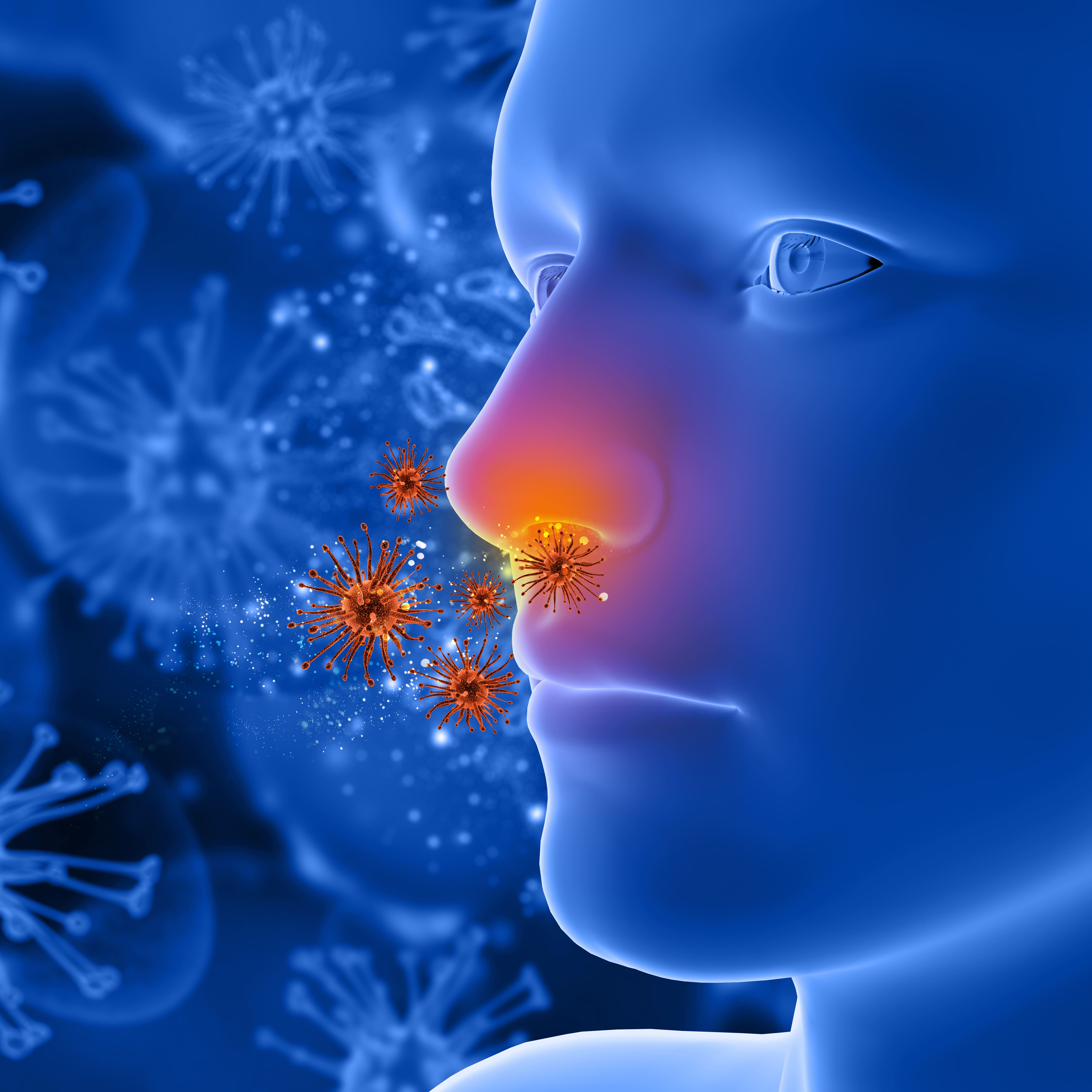
Cost of Allergic Rhinitis Treatment in Singapore
| Treatment Type | Price Range in SGD |
| Eye Drops and Nasal Sprays | SGD 10 to SGD 35 |
| Nasal Corticosteroids (Anti-Inflammatory Medicine) | SGD 10 to SGD 50 |
| Antihistamine Drops and Sprays | SGD 10 to SGD 25 |
| Combination Sprays | SGD 25 to SGD 35 |
| Leukotriene Inhibitors | SGD 28 to SGD 80 |
| Decongestants | SGD 6 to SGD 15 |
| Immunotherapy (Allergy Shots and SLIT) | SGD 500 to SGD 1,500 annually |
| Surgery | GD 2,000 to SGD 10,000+ |
Subsidies for Allergic Rhinitis Treatment in Singapore:
- The government provides MediSave subsidies for patients with chronic conditions, including allergic rhinitis.
- Complex chronic patients can use up to $700 yearly, while other patients have a $500 cap. Each claim requires a 15% co-payment in cash.
- CHAS cardholders may receive additional subsidies up to $500 annually.
- Pioneer and Merdeka Generation cardholders can receive up to $540 annually under special subsidies.

Why Choose Nuffield ENT for Allergic Rhinitis Treatment?
- Nuffield ENT offers comprehensive diagnostics and treatments for various ear, nose, and throat (ENT) conditions, including allergic rhinitis.
- Our team consists of board-certified ENT doctors and experienced staff dedicated to providing high-quality care for patients with allergies and sinus problems.
Testimonials From Our Satisfied Clients
Home Remedies For Allergic Rhinitis
- Saline Nasal Rinses: Use saline solution to irrigate your nasal passages, removing allergens like pollen and dust. This can help reduce nasal congestion and irritation.
- Steam Inhalation: Inhale steam from a bowl of hot water or take a steamy shower to help moisten the sinuses and alleviate nasal congestion.
- Honey and Warm Beverages: Consuming local honey may help your body adapt to local allergens. Warm beverages like herbal teas can soothe the throat and ease post-nasal drip.
FAQs
No. Allergic rhinitis can be managed effectively with treatments, but it is generally considered a chronic condition without a permanent cure.
Allergic rhinitis duration varies, typically lasting for as long as you’re exposed to allergens, but seasonal forms may last for weeks.
No, allergic rhinitis is not contagious. It’s caused by allergens like pollen or dust, not spread from person to person.
Untreated allergic rhinitis can lead to worsening symptoms, chronic sinusitis, and disrupted sleep.
Yes. Allergic rhinitis doesn’t directly cause bronchitis, but it can exacerbate asthma symptoms and potentially lead to bronchial issues due to ongoing inflammation.
Hay fever is typically worst in Singapore during the months of May and October, corresponding with peak periods of regional haze and pollen production
It’s generally recommended to start taking hay fever medication about two weeks before the expected start of the pollen season in your area. This helps your body build up resistance and manage symptoms better when pollen levels peak.
Yes, allergic rhinitis has a genetic component. If your parents have allergies, you’re more likely to develop allergic rhinitis.
Yes, blowing your nose too hard can worsen rhinitis by irritating nasal passages and potentially spreading infections.
Avoid foods that trigger allergies; common culprits include dairy, wheat, alcohol, and sometimes certain fruits or nuts.
Choose foods rich in omega-3 fatty acids, such as salmon and flaxseed, that may help reduce inflammation associated with allergic reactions
Medical References
Bousquet, Jean, et al. “Allergic Rhinitis.” Nature Reviews. Disease Primers, vol. 6, no. 1, Dec. 2020, doi:10.1038/s41572-020-00227-0.
Siddiqui, Za, et al. “Allergic Rhinitis: Diagnosis and Management.” British Journal of Hospital Medicine, vol. 83, no. 2, Feb. 2022, pp. 1–9, doi:10.12968/hmed.2021.0570.
Zhang, Yuan, et al. “Advances and Highlights in Allergic Rhinitis.” Allergy, vol. 76, no. 11, Aug. 2021, pp. 3383–89, doi:10.1111/all.15044.
